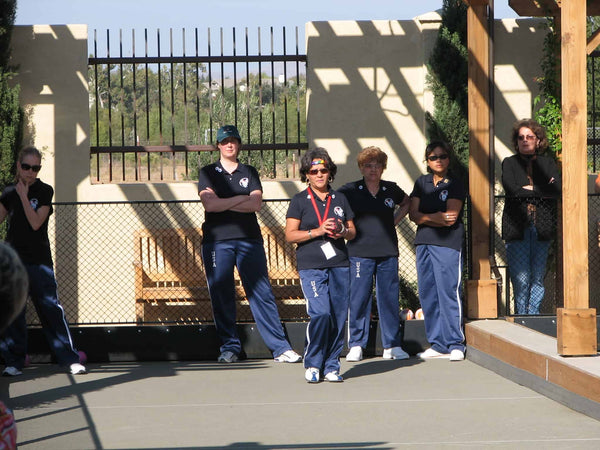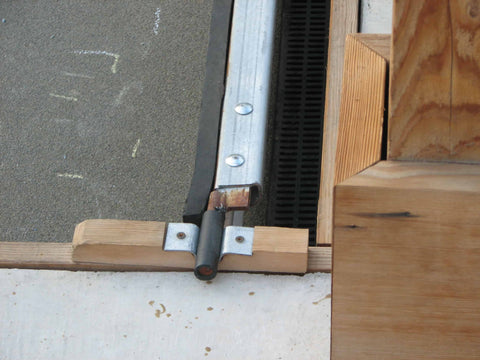Concrete Perimeters for Bocce Courts
A frequent question we get is whether or not to “line” a concrete perimeter with wooden or composite materials.
Side Rails – “No”
End Walls – “Yes”
Bocce balls glance off the perimeter side rails but collide with the court end walls. Our suggestion would be to consider applying some type of protection to the court ends only, where the impact is most powerful. A ball tossed with speed - traveling the length of the court and hitting concrete will eventually (if not immediately) break the ball or the concrete. Cheap bocce balls manufactured in China will fracture into pieces risking injury. Buy bocce balls made in Italy! We recommend www.playaboule.com or www.davincibocce.com. The density of the concrete could send the ball halfway back up the court potentially interfering with other balls and the match.
Photo Caption: North American Championships. Note the backstop. hanging with heavy rubber pad to lessen the noise created when the balls clang on the steel. On the side rails, they attached wood but then attached a dense composite strip to the wood.
The Side Rails.
We DO NOT Recommend attaching wooden planks to concrete side rails. The reason for lining a concrete bocce court is to eliminate the abrasive effects of “stone on plastic”. Concrete is porous and will file down portions of the bocce balls when the balls make contact with the side rails - eventually changing the spherical shape intended by the manufacturer. Since the balls are approximately 4” in diameter they will make contact with rails about 2” above the surface. By painting a line 2” wide from 1” to 3” above the court playing surface with exterior latex paint (2 or 3 coats) one can eliminate the reshaping of the balls. Concrete has a greater density than wood so has greater reactivity. Wood rails attached to the concrete lessens the bounce off.

The End Rails.
We DO RECOMMEND attaching pressure treated wood to the concrete with both anchors and adhesive on the end walls. Then attach a soft composite to that material (some use rubber). The logic here is that wood attaches well to concrete and the composite attaches well to the wood. Frequent impact with the end rails will destroy the wood in a few years. The composite protects the concrete, the wood, and the balls. BE SURE that the screws on the composite are not at 2” above the surface as that is where the balls will make contact.
"Court stop" is a hanging steel plate with a rubber pad to deaden the sound of the balls hitting the steel.
This photo shows how beaten up the pressure treated backstop took before they put a piece of protective composite material to take the impact.

Shows bare timber rails down the length of the perimeter but with a protective composite backstop.

This is a great example of concrete sides with a composite backstop.







